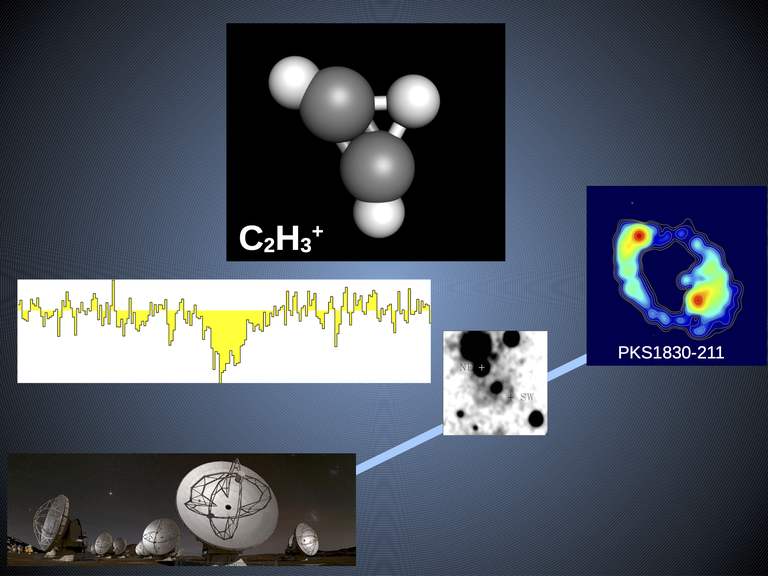Science Highlights - Protonated acetylene in the z=0.89 absorber toward PKS1830-211
The line of sight to the lensed blazar PKS1830-211 intercepts the disk of a foreground spiral galaxy at z=0.89 where absorption has been detected for more than 60 molecular species, mostly at mm wavelengths. In a paper accepted for publication in A&A. Dr. Sebastian Muller and colleagues report the detection of a new interstellar molecule, protonated acetylene C2H3+, based on ALMA observations of this absorber. The molecule has been suspected to be present in the interstellar medium for a long time, but it has eluded detection so far due to the unfavourable frequencies of its rotational spectrum. Thanks to the redshift of the absorber, the ground-state transitions of both ortho and para forms could be detected in ALMA high-sensitivity spectra. As one of the initial hydrocarbon building blocks, C2H3+ is thought to play an important role in astrochemistry, in particular in the formation of more complex organic molecules.

View of the molecule (created with MolView) and an absorption spectrum observed with ALMA in the line of sight of the quasar PKS1830-211. The quasar (here observed with the MERLIN interferometer at radio wavelengths) is lensed by a foreground spiral galaxy at z=0.89 (optical image from HST).
